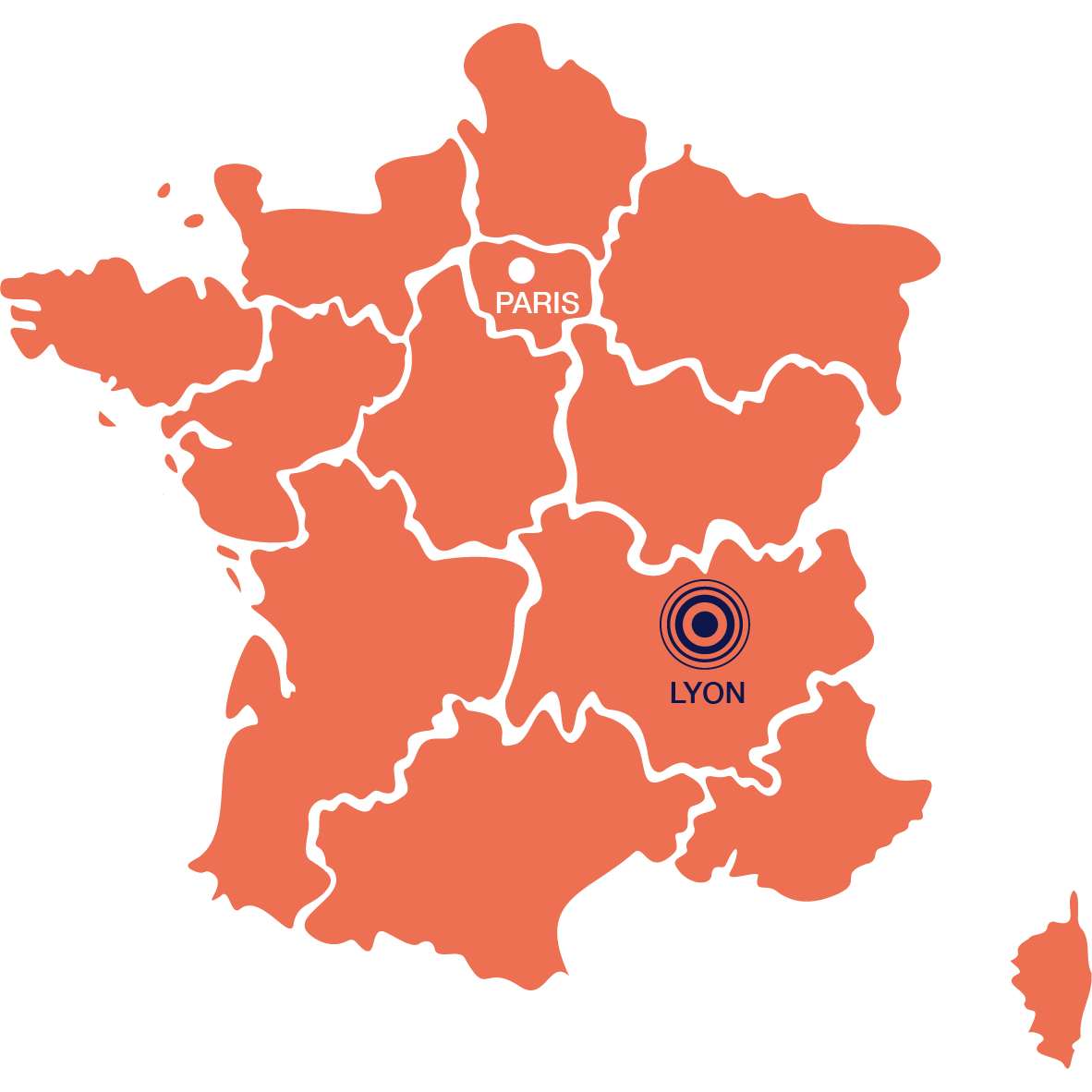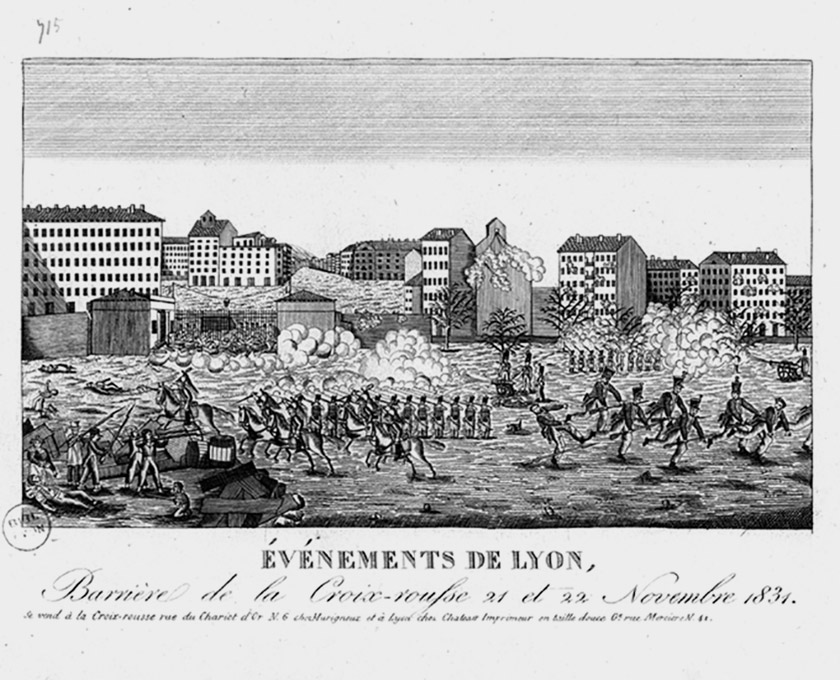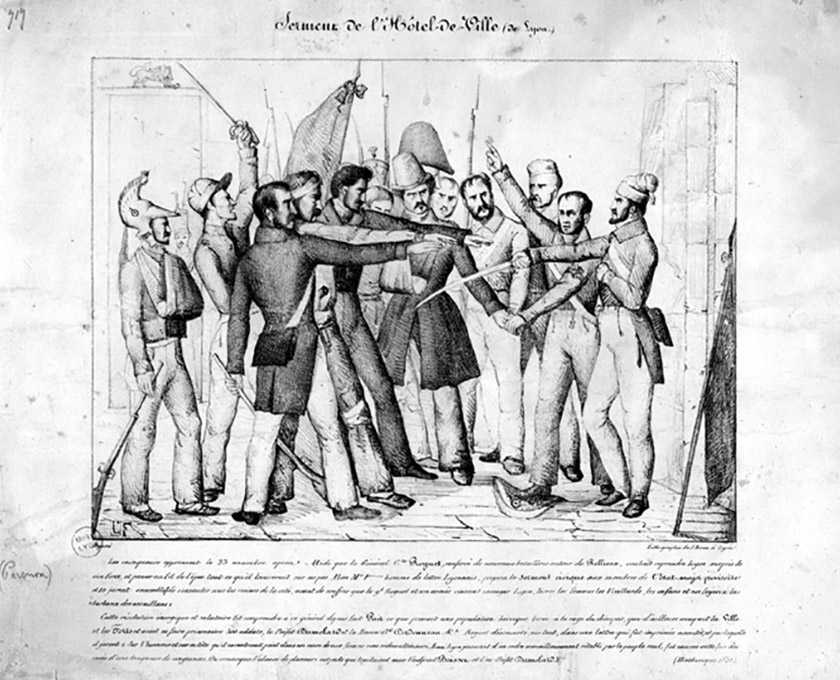The Canuts
An age-old struggle for decent work
Lyon, the last stop of the Silk Road
Lyon, the capital of the Auvergne-Rhône Alpes region, is one of the oldest cities in France, founded as “Lugdunum” by the Romans under the name of Lugdunum in the first century BC. As the oldest Christian city in the country, it is also a very important city for French Catholics.
Built at the confluence of the rivers Rhône and Saône, Lyon holds an ancient reputation as a commercial city, receiving traders from the prosperous markets of Switzerland and Italy. Even today, Lyon is considered a major city in France, renowned for its gastronomy as well as its ancient architecture and universities.

As a major European trading city, Lyon is often regarded as one of the last stops of the famous Silk Roads. These roads once connected the prosperous Chinese empire to European states, in a constant exchange of knowledge and goods, including the famous silk. Even though this network has always existed, it lived its golden age during the European Middle Ages.
Silk first reached in Lyon in the 15th century, when it was sold in its markets by Italian artisans. After noticing that the French elites loved this fabric, King Louis XI set out to found silk workshops in France. After a difficult start, these workshops eventually established themselves in Lyon, which became a major capital of silk production for the courts of Europe.
In 1801, inventor Joseph Marie Jacquard created a mechanism that revolutionized the production of silk: the Mécanique Jacquard, an ingenious machine that allows individual workers to create intricate fabrics.
This new machine, which greatly simplified silk works, permitted the emergence of a community of craftsmen which would leave a mark in the history of Lyon: the Canuts.
The legacy of the Canuts in Lyon
Lyon is a city spread over two hills around the Rhône: amongst them, the Lyonnais like to distinguish "the hill that prays" (Fourvière, to the West) from the "hill that works" (La Croix Rousse, to the Northeast). Indeed, if Christian churches and basilicas abound on the ancestral hill of Fourvière, Croix Rousse hill was once filled with the silk workshops, of the Canuts.
Nowadays, the Canuts no longer exist, and the Croix Rousse has become a bohemian district, much appreciated by the Lyonnais. However, its Canut heritage is still clearly visible, with its tall building, where the Canuts installed their 4-meter-high jacquard mechanics.
In this district filled with reddish houses, street names evoke this proletarian heritage, and a large square is named after the Canuts, with a statue of Jacquard at its center. In one of its alleys, there lies the “House of the Canuts”, a museum dedicated to these weavers who made Lyon’s fame in the 19th century.
The museum is directed by Philibert Varenne, himself the great-grandson of a silk worker, who seeks to maintain the memory of the Canuts and their skills. Its museum traces the history of Lyonnaise Silk, and holds a copy of a Mécanique Jacquard.
If Lyonnais are so protective of the Canuts’ history, it is because their social struggle and the way they united transformed the city and inspired several thinkers. Installing themselves in the Croix Rousse, a hill with cheaper rent, safe from river floods, they worked in very difficult conditions, working for 16 to 18 hour shifts for a very small pay.
Not unlike fair trade artisans in India, Canuts created self-help organizations, such as "Le Devoir Mutuel", founded in 1828. These organizations united artisans who received support in case of illness or unenmployment thanks to a monthly fee. Some Canuts also started to organized to negotiate better wages, take political action and defend the place of women in society.
In 1831, they founded the first worker’s newspaper, L’Écho de la Fabrique, where they thaught and discussed the best ways to defend their rights.



The vivid memories of the Canut’s struggle
In the mid 19th century, the Canut’s wages were decreasing. Furthermore, despite a liveral revolution in Paris, Canuts were disappointed to see that new legislation prevented them from organizing. To make matters worse, their buyers wanted them to give up their individual workshops and come to work in centralized factories. Despite repeated requests for an increase in wages, their demands are refused.
This indignation will lead to the famous Canuts Revolt of November 1831. Craftsmen demonstrate in the streets of Lyon under the slogan "Live free working or die fighting!". The rally was repressed by blood, but the memory of their fight remained and inspired thinkers such as Karl Marx and Flora Tristan.
Despite their audacity and their organizational capacity, the Canuts faded away, replaced by mechanization and synthetic products. Only a few Mécaniques Jacquard remain, preserved by museums or associations, and used for special products.
Despite their disappearance, the organization and initiatives of the Canuts peoples continue to inspire many social movements around the world.
Manuel-Antonio Monteagudo








